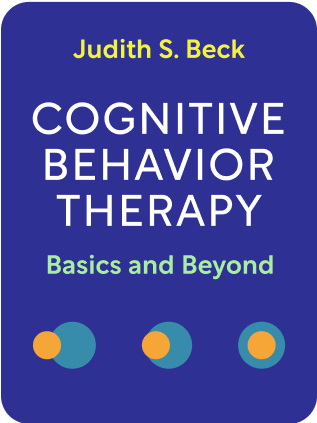

This article is an excerpt from the Shortform book guide to "Cognitive Behavior Therapy: Basics and Beyond" by Judith S. Beck. Shortform has the world's best summaries and analyses of books you should be reading.
Like this article? Sign up for a free trial here .
What are some great CBT exercises you can try? How can you apply therapy techniques to your own life?
CBT exercises are a great way to apply popular therapy techniques to your own life. Doing so can help you better understand your own mind and change negative thinking patterns. Even if you’re not a licensed therapist, understanding the principles of CBT can dramatically improve your mental health.
Keep reading for the best five CBT exercises to try at home.
The Top 5 CBT Exercises
The following CBT exercises will help you better understand your own mind and improve your thinking patterns.
1. Question Your Own Automatic Thoughts
Reflect on automatic thoughts you have and how they might be improved.
- Think about a time in the past day or so where you felt a negative emotion about yourself (like self-doubt, anxiety, or sadness). What was going through your mind just then?
- How did that thought make you feel?
- What’s the evidence that your thought is true? What’s the evidence on the other side?
- What’s an alternative way of viewing this situation? What’s the worst that could happen?
2. Consider Your Automatic Thoughts
Automatic thoughts can arise for all people. Think about what automatic thoughts you have and how they affect your emotion.
- Think about the last time you felt an automatic negative emotion in response to a situation. What was the situation? What were you feeling?
- Picture the situation vividly. What thoughts do you remember thinking at the time?
- Did more thoughts continue to pile onto the original negative thought? What were these thoughts?
3. Dealing With Negative Emotions
When you feel dysphoria (negative emotion), think the cardinal question: “What was just going through my head?” Articulate the thought explicitly.
- e.g. “I’m afraid that people will think my project proposal is stupid.”
Evaluate the thought with these questions:
- What else could explain the person’s behavior/the outcome?
- Outcome analysis
- What’s the worst that could happen? How would you cope with this situation?
- What’s the best that could happen?
- What’s the most realistic outcome of this situation? (especially if you tend to catastrophize)
- What is the effect of believing your negative automatic thought? What could be the effect of changing your thinking to be more positive?
- If your friend were in this situation and had the same automatic thought, what advice would you give him or her?
- What should you do going forward? How likely are you to do this?
4. Discover Your Core Beliefs
To uncover your deeper beliefs, keep asking yourself questions about the situation or the automatic thought. “What does it mean to me if X happens? What does it mean about me?”
- Articulate your rules, assumptions, and attitudes.
- Attitude: “It’s terrible to fail.”
- Rule: “If a challenge seems too great, don’t even try it.”
- Assumption: “If I try to do something difficult, I’ll fail. If I avoid doing it, I’ll be OK.”
5. Challenge Negative Beliefs
For negative beliefs, consider the following interventions:
- Phrase the rule/belief as an assumption—this makes it easier to spot the logical fallacy.
- “If I ask for help, I’ll be seen as weak.” vs “Don’t ask for help.”
- Present more functional beliefs, that are more qualified versions of the old belief
- “If I don’t get an A, I’m a failure.” -> “If I don’t get an A, I’m just human, and I still tried hard. It’s better than 0%.”
- “I can’t do anything right.” -> “I can do most things right, and there’s a good reason for when I get something wrong.” NOT “I can do everything right.”
- Behavior experiment
- Act “as if” the belief weren’t true.
- Act as if you assume the positive outcome will be true.
- Imagine counseling someone else with the same issue, or pretend your child has the same belief.
- Look back on major periods of patient’s life to find evidence that supports and contradicts the core belief
- Role playing an early traumatic experience. Play an older version of yourself, counseling your younger self on why the situation should be interpreted more optimistically.
- Make a list of advantages and disadvantages of each option. Score each entry to help make the ultimate decision.
- Continue imagining beyond the near future—weeks, months, years after whatever is causing dysphoria. Likely will find (inferring from past experience) that things will resolve satisfactorily.
The above CBT exercises will help you better understand your own mind and challenge negative thinking.

———End of Preview———
Like what you just read? Read the rest of the world's best book summary and analysis of Judith S. Beck's "Cognitive Behavior Therapy: Basics and Beyond" at Shortform .
Here's what you'll find in our full Cognitive Behavior Therapy: Basics and Beyond summary :
- How to use CBT to overcome anxiety, sadness, anger, frustration, and stress
- How to address traumatic events earlier in your life, so that they have less hold on your thinking today
- The key ways to build rapport as a cognitive behavior therapist






